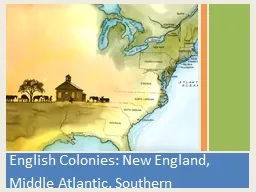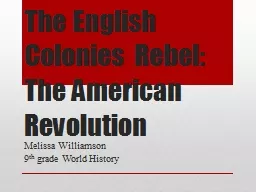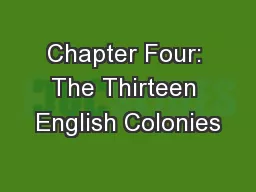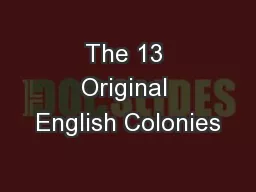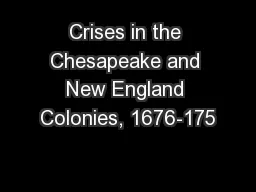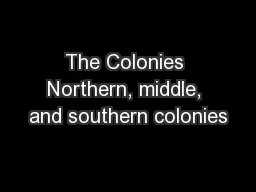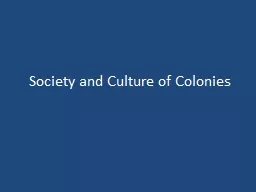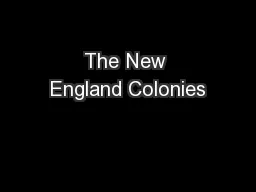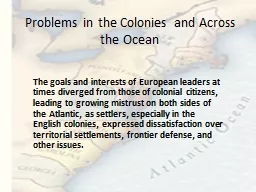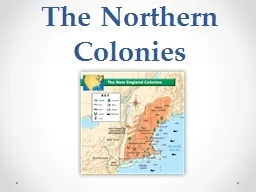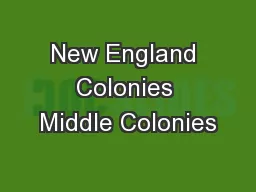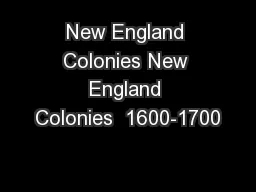PPT-English Colonies: New England,
Author : trish-goza | Published Date : 2017-07-21
Middle Atlantic Southern Level 1 Vocabulary Region areas of land created by human used to manage and interpret the complexity of Earths surface Patroons a person who held an estate of land with certain privileges
Presentation Embed Code
Download Presentation
Download Presentation The PPT/PDF document "English Colonies: New England," is the property of its rightful owner. Permission is granted to download and print the materials on this website for personal, non-commercial use only, and to display it on your personal computer provided you do not modify the materials and that you retain all copyright notices contained in the materials. By downloading content from our website, you accept the terms of this agreement.
English Colonies: New England,: Transcript
Download Rules Of Document
"English Colonies: New England,"The content belongs to its owner. You may download and print it for personal use, without modification, and keep all copyright notices. By downloading, you agree to these terms.
Related Documents

